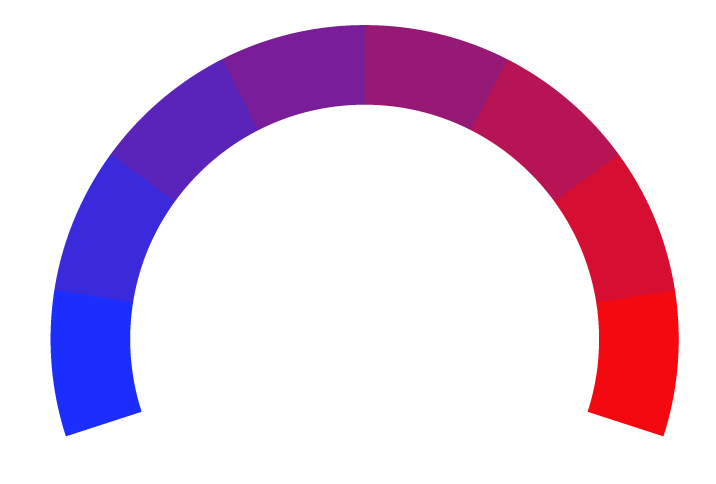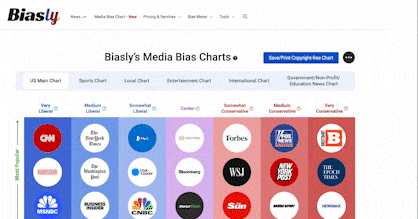Barack Obama's stance on criminal justice reform was generally liberal. He pushed for reducing mandatory minimum sentences, especially for nonviolent drug offenses, and expanded the use of clemency to shorten sentences for many inmates. Obama also directed the Department of Justice to reform federal charging policies and address racial disparities in the system. While he maintained support for law enforcement, Obama emphasized the need for a smarter, fairer, and more effective criminal justice system that focuses on rehabilitation and reducing recidivism. Overall, Obama's criminal justice policies can be characterized as Somewhat Left.
Source: The President's Role in Advancing Criminal Justice Reform Barack Obama's economic policy leaned towards the center, with a mix of moderate tax increases on higher-income Americans, stimulus spending, banking regulation, and healthcare reform. While he increased taxes on the wealthy, he also extended most of the Bush-era tax cuts. Obama's policies aimed to address the Great Recession, reduce the deficit, and improve economic security for the middle class, though he faced significant opposition from a Republican-controlled Congress during his second term. Overall, Obama's economic approach can be characterized as Somewhat Left.
Source: Economic policy of the Barack Obama administration - Wikipedia Barack Obama's education policy leaned Somewhat Left overall. While he initially appointed a talented team of education reformers and advocated for policies like charter schools and teacher evaluations, his administration ultimately pursued a polarizing, bureaucratic, and Washington-centric agenda. Obama expanded federal funding and influence in education, pushing initiatives like Race to the Top and universal preschool, but faced criticism for undermining bipartisanship and school choice. Overall, Obama's education policy demonstrated a moderate-to-liberal approach, seeking to increase federal involvement and standards while facing resistance from conservatives.
Source: The Real Obama Education Legacy | National Affairs Barack Obama's energy policy leaned towards the liberal side, with a focus on promoting clean energy, reducing carbon emissions, and addressing climate change. He supported policies such as vehicle fuel economy standards, greenhouse gas regulations, renewable energy incentives, and investments in clean energy research and development. Obama also sought to reduce reliance on fossil fuels and oil imports, while allowing for some expansion of domestic oil and gas production. Overall, his energy policy stance can be characterized as Somewhat Left.
Source: Climate & Energy | The Obama Foundation Based on the information from the sources, Barack Obama's stance on government dependency appears to be Somewhat Left. While he expanded programs like Medicaid and food assistance to help those in need, he also emphasized the importance of self-reliance and reducing long-term welfare dependency. Obama sought to strike a balance, using government programs as a safety net while also promoting policies to help people become more self-sufficient. Overall, his approach seems to lean towards the center, with a slightly liberal tilt on the issue of government dependency.
Source: Dependency Index up 23 Percent Under Obama | American Enterprise Institute - AEI Based on the information from the White House website, President Barack Obama's stance on healthcare policy was firmly on the liberal side of the spectrum. He championed the Affordable Care Act, which expanded access to healthcare coverage, prohibited discrimination against pre-existing conditions, and provided financial assistance to make coverage more affordable. The law also included provisions to improve the quality and affordability of healthcare, such as requiring insurers to spend a minimum percentage of premiums on medical care. Overall, Obama's healthcare policies aimed to increase access and affordability, aligning him with a Very Left stance on this issue.
Source: Health Care that Works for Americans | The White House Barack Obama's immigration policy leaned towards the center, balancing both liberal and conservative approaches. While he increased deportations in his early years, he later implemented the Deferred Action for Childhood Arrivals (DACA) program to protect undocumented immigrants brought to the U.S. as children. Obama also sought to reform the immigration system by expanding family-based immigration and skilled worker visas. Overall, his immigration stance aimed to address the complex issues surrounding immigration in a pragmatic manner.
Source: Immigration Under Barack Obama Based on the information provided in the Contexts, Barack Obama's national security policy leaned towards the liberal side. He emphasized strengthening global alliances, promoting universal values, and addressing transnational threats like terrorism and disease outbreaks through multilateral cooperation. However, he also maintained a strong national defense and reinforced homeland security measures. Overall, Obama's national security strategy sought to balance American leadership with a more cooperative and values-driven approach to global challenges.
Source: President Obama's National Security Strategy in 2015: Strong and Sustainable American Leadership According to the analysis, President Obama's approach to reducing the budget deficit was a balanced one, borrowing from the Bipartisan Fiscal Commission and building on $1 trillion in deficit reductions in his 2012 budget. His plan aimed to achieve $4 trillion in deficit reduction over twelve years through a combination of spending cuts, tax increases, and structural reforms. While Obama's positions were generally aligned with the median Democratic voter, he was willing to compromise and take more moderate stances compared to the more liberal positions of the Congressional Progressive Caucus.
Source: President Obama’s Framework for $4 Trillion in Deficit Reduction Barack Obama took a more progressive approach to the war on drugs compared to previous administrations, shifting the focus from a punitive criminal justice model to a public health-oriented strategy. He increased funding for drug treatment and prevention programs, reduced mandatory minimum sentences for non-violent drug offenders, and allowed states to experiment with marijuana legalization. While not as aggressive as some reformers would have liked, Obama's policies represented a significant departure from the "tough on crime" rhetoric and practices that had dominated the drug war for decades.
Source: How Obama quietly reshaped America’s war on drugs | Vox
| 























